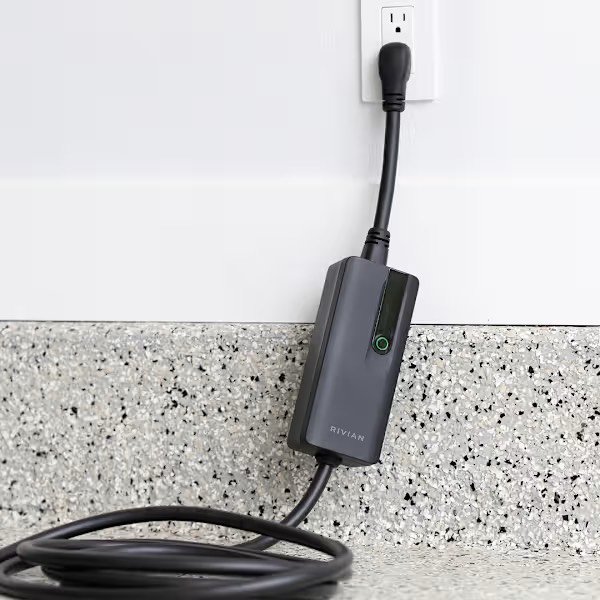Rivian No Longer Includes Portable Charger With 2026 R1T and R1S

If you’re planning to order a 2026 Rivian R1T or R1S, here’s something to keep in mind: Rivian is no longer including the Portable Charger with new vehicles.
Previously, every Rivian came with a Portable Charger that let you charge at home using either a standard 120V outlet or a 240V NEMA 14-50 outlet. For 2026, that charger is now a separate $400 accessory, regardless of whether you choose the NACS or J1772 variant.
This change applies across the lineup, even on the high-end Quad-Motor trims. And that’s a bit surprising, especially considering how many accessories Rivian bundles with the Quad.
That said, there are still plenty of ways to charge at home. Rivian sells its own Wall Connector (also available in NACS or J1772), or you can go with any number of third-party wall chargers for faster and more reliable charging speeds. Just know that if you were expecting to plug in right out of the box with a Portable Charger, you’ll now need to add one to your cart, or start planning your charging setup another way.
For many buyers, this won’t be a dealbreaker, but it’s still a notable change that shifts a bit more of the setup responsibility back onto the customer.

Not a big deal. I’ve never used my Rivian charger, rather a L2 charger I installed in my garage. I think most Rivian owners will be savvy enough to install a better charger. There are plenty of public chargers in most places for road trips.
I’ve only used mine a couple times in 2.5 years of ownership. However in a world still in the infancy of transitioning to EV’s this seems like such a basic item, it should be included. We’re not talking about Apple not including a phone charger, here. Most people don’t already have a drawer full of these. Hopefully new owners are made aware to not expect one.
Cars becoming like smart phones. Gotta buy the charger separately… wondering if these people took business classes 101
I’ve used my mobile charger a couple of times, when only a standard electrical outlet was available. Omitting something that only some will use has some logic, but it’s still a “get out of dodge” when no other charging option exists, still the case some places, or when public chargers fail. My state’s state park campgrounds seem to allow plugging in EVs on powered sites, but not all have EV chargers, and who wants to leave an EV at the charger for hours, instead of just going to camp. New EV users may have a better experience, even if the use is only very occasional.
Has anyone confirmed the Tesla mobile charger works with the 2026 Rivians?
It does!